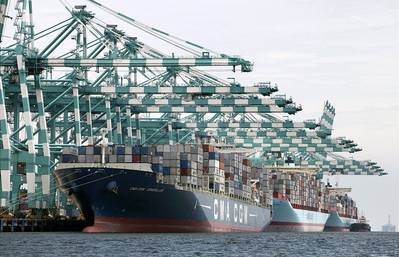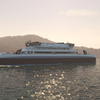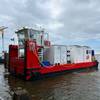Container Ship Newbuildings: Supply May Outstrip Demand
Ocean carriers have a pool of surplus 8,000-10,000 teu vessels looming ahead unless some thinking ‘outside of the box’ is behind recent newbuild orders, considers Drewry Maritime Research in their latest 'Container Insight'.
Supply side
Ocean carriers have returned to ordering vessels between 8,000-10,000 teu in large numbers, suggesting that either overcapacity is brewing ahead, or unusual service developments are in the pipeline. By the end of this year, 55 vessels averaging 8,600 teu will already have been delivered, increasing the sector’s capacity by a remarkable 18%, well ahead of global cargo growth, and a further 40 are due for delivery next year, which will increase it by another 11.6%. Moreover, 45 more are due for delivery in 2015, adding yet another 11.6% y-on-y growth.
On top of this, say Drewry, around 20 existing vessels in the size range are due to become surplus to requirements once Maersk Line’s, MSC’s and CMA CGM’s Asia/North Europe services are merged in 2Q 14
To make matters worse, another 44 vessels averaging 14,638 teu are due for delivery next year (further postponements excluding), which will most probably lead to the same number of vessels between 8,000 teu and 10,000 teu being displaced.
Demand side
On the demand side of the equation, the P3 alliance will probably need at least 30 of the units for its five Transatlantic services from 2Q 14, as made clear in last week’s Med-North America Supply/demand trade route analysis, and the previous week’s analysis of the North Europe-North America tradelane, although Maersk/MSC/CMA CGM’s intentions have yet to be confirmed, and it is still unclear what schedules are to be replaced.
Because its competitors will be unable to compete with the economies of scale offered by these bigger transatlantic ships – the average between Northern Europe and North America and between the Mediterranean and North America is just 4,000 teu and 4,800 teu respectively – they will presumably have to follow suit, but it remains to be confirmed how this will be done.
The G6 vessel sharing alliance (APL, Hapag-Lloyd, MOL, HMM, OOCL, NYK) has so far only clarified that its geographic scope is to be extended to the tradelane, as well as to the route between Asia and WCNA. No service rationalisation has been mentioned.
Ignoring this possibility, supply of vessels between 8,000 teu and 10,000 teu looks set to well exceed demand growth, therefore, so where the excess will be deployed is intriguing. As explained in ‘North-South lanes reaching saturation’, there is no immediate home for the vessels outside of the east-west tradelanes, which is where the 21 units ordered by Hamburg Sud, CSAV and CCNI will presumably be deployed.
The opening of the Panama Canal’s expanded locks at the end of 2015 will open up many new possibilities, although, here again, nothing has yet been confirmed, so envisaging anything would just be conjecture. It is highly likely that many Asia/ECNA services will be upgraded from the current 5,000 teu restriction in 2016, however.
Drewry Maritime Research's View
The current order book of vessels between 8,000 teu and 10,000 teu appears excessive.
Source: Drewry Maritime Research











